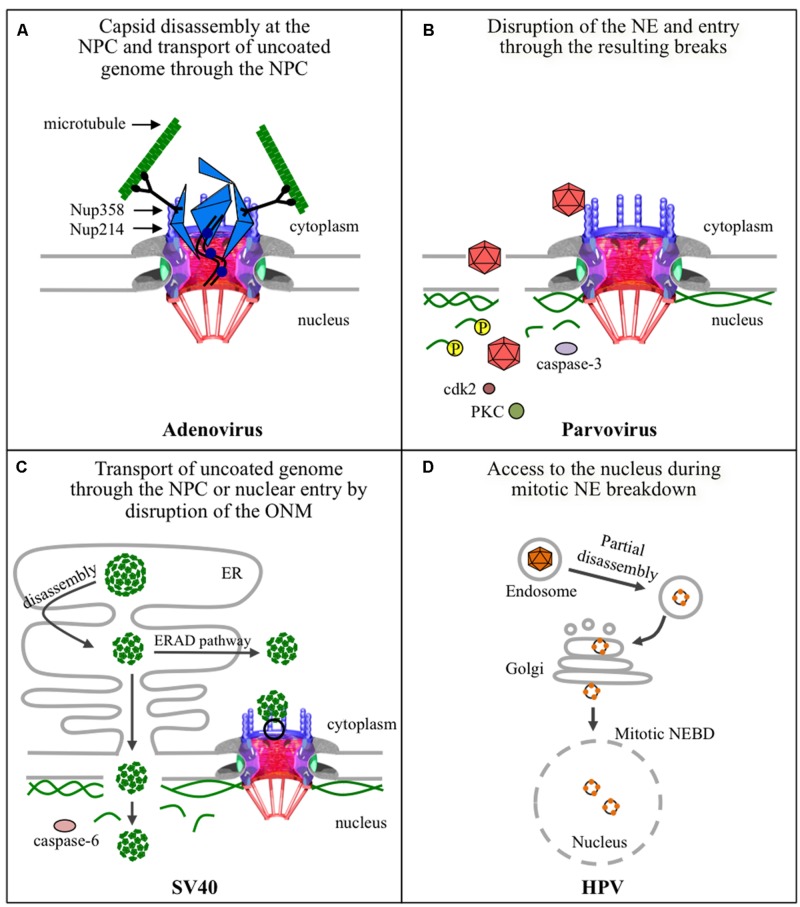FIGURE 5.
Strategies used by non-enveloped viruses for nuclear entry of their genomes. (A) The adenovirus capsid docks at the NPC via binding of hexon protein to Nup214, and uses Nup358-bound kinesin-1 via its heavy chain to completely disassemble the capsid that is also bound to kinesin-1, via its light chain, and deliver the uncoated genomes into the nucleus through the NPC. Kinase-1 binds to the capsid via its light chains and to Nup358 via its heavy chains. Movement of kinase-1 along microtubules exerts a pulling action that disassembles the capsid. (B) Parvoviruses enter the nucleus by transiently disrupting nuclear membranes, by a yet unknown mechanism, and disassembling the nuclear lamina. The latter involves phosphorylation of lamin A/C by PKC and cdk2, and cleavage of lamin-B by caspase-3. (C) SV40 partially disassembles inside the endoplasmic reticulum (ER) and the subviral particles could follow two different pathways to deliver the genome into the nucleus. The first involves exit of the subviral particle into the cytoplasm using the cellular ERAD pathway and cellular chaperones, disassembly at the NPC, and import of the uncoated genome through the NPC. The second is directly from the ER to the nucleus by direct disruption of the inner nuclear membrane and underlying nuclear lamina using caspase-6. (D) HPV partially disassembles in endosomes, and a possible route through the Golgi apparatus, and gains access to the nucleus during mitosis when the NE breaks down.

